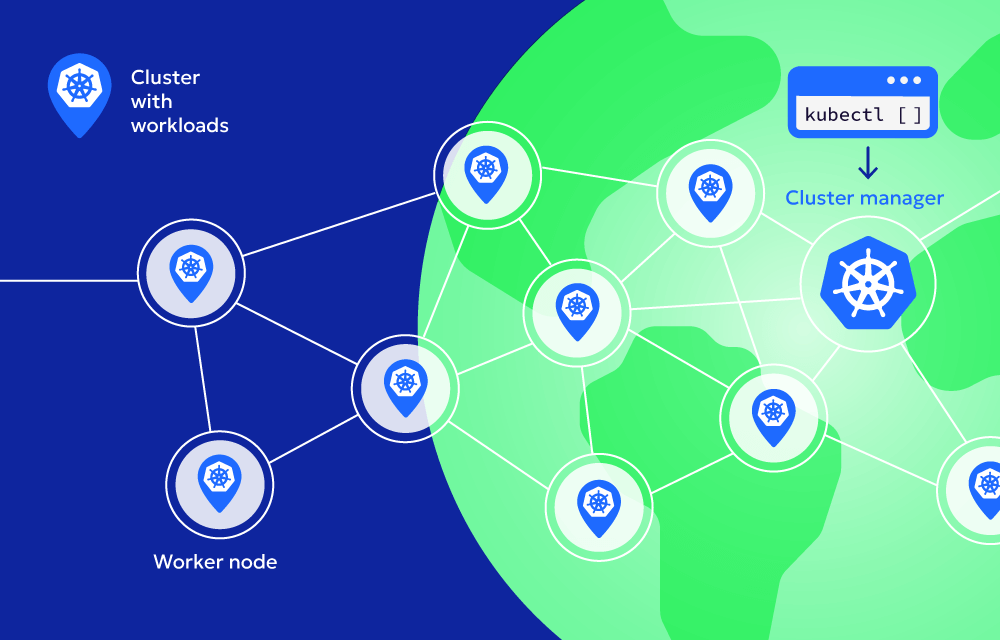Why do this? Simple. To increase availability, resilience, and global performance. Instead of hosting your entire application in a single region—where an outage could take everything down—you spread it out across regions to keep services running, no matter what.
It’s like not putting all your eggs in one basket. Except the baskets are thousands of miles apart.
Why Run Kubernetes Across Regions?
If you’ve worked with Kubernetes long enough, you’ve probably thought:
“What happens if the entire region my cluster is in goes offline?”
That’s exactly the problem cross-region clusters solve. They’re designed to help you:
- Survive regional failures
- Serve users closer to their physical location
- Distribute workloads for better latency and reliability
Imagine you’re running an app with users in North America, Europe, and Asia. With a cross-region cluster, you can deploy pods near your users while keeping your services connected. Even if one region goes down, your app stays available elsewhere.
Common Architectures for Cross-Region Kubernetes
Running Kubernetes across regions is complex, and there’s no one-size-fits-all design. But here are the two most common approaches:
1. Single Control Plane, Global Worker Nodes
In this setup, you have one Kubernetes control plane (the brain) running in a single region, and worker nodes (the muscle) spread across multiple regions.
- Easier to manage
- High latency between control plane and distant nodes
- Risky if the control plane’s region goes down
2. Multiple Clusters, One Per Region
Here, each region has its own independent Kubernetes cluster. You connect them using global load balancing and service mesh tools to make them behave as one.
- Better isolation
- No single point of failure
- More complex operations
- Requires syncing configurations across clusters
Real-World Example
A global SaaS company might run three clusters:
- One in us-east-1 (Virginia)
- One in eu-west-1 (Ireland)
- One in ap-southeast-1 (Singapore)
They use Cloud DNS and a global load balancer to route users to the closest healthy cluster. Behind the scenes, they sync databases using cross-region replication and manage cluster configurations with GitOps workflows.
The result? Fast, reliable service for users around the world—and built-in protection against regional outages.
Benefits of Cross-Region Kubernetes
- Disaster Recovery: If one region goes offline, your app keeps running in others.
- Low Latency: Users are automatically routed to the closest region, speeding up response times.
- Compliance: You can keep data in specific countries or regions to meet legal requirements.
- Scalability: Distribute workloads globally to handle traffic spikes in different time zones.
What’s the Catch?
Cross-region Kubernetes sounds great—and it is—but it’s not free of challenges. Expect:
- Networking Complexity: You need fast, reliable connections between regions.
- Data Syncing Issues: Keeping databases consistent across regions is tough.
- Higher Costs: Cross-region traffic and infrastructure aren’t cheap.
- Operational Overhead: More moving parts mean more things to monitor and maintain.
From experience, cross-region setups work best for businesses that absolutely need high availability and global reach. If you’re just getting started with Kubernetes or running small workloads, this is overkill.
Cross-Region vs. Multi-Zone: What’s the Difference?
People often confuse cross-region with multi-zone. Here’s the difference:
| Feature | Multi-Zone Cluster | Cross-Region Cluster |
|---|---|---|
| Location | Same region, multiple zones | Multiple regions globally |
| Purpose | Protect from zone failures | Protect from regional failures |
| Latency | Low | Higher across regions |
| Complexity | Moderate | High |
Multi-zone is like having a backup generator.
Cross-region is like building three separate power plants in different countries.
Why Trust This Explanation?
This advice comes from hands-on experience managing global Kubernetes workloads across AWS, GCP, and Azure. Cross-region clusters aren’t just theory—they’re powering real businesses today, from e-commerce platforms to video streaming services.
I’ve seen teams thrive with cross-region Kubernetes, and I’ve seen teams overwhelmed by it. Knowing when it’s worth the effort (and when it’s not) is half the battle.
Related Tools and Technologies
- Istio / Linkerd (for cross-cluster service mesh)
- Velero (for multi-region backups)
- GitOps tools like Argo CD and Flux (for syncing configurations)
- Global Load Balancers (like AWS Global Accelerator or Cloudflare)
Final Thought
Cross-region Kubernetes isn’t something you “just set up.” It takes planning, experience, and a clear business case. But for companies that can’t afford downtime and want global performance, it’s an investment that pays off.



